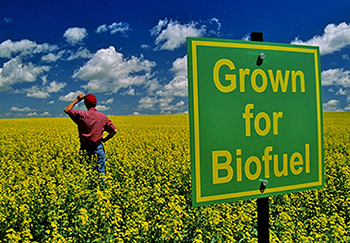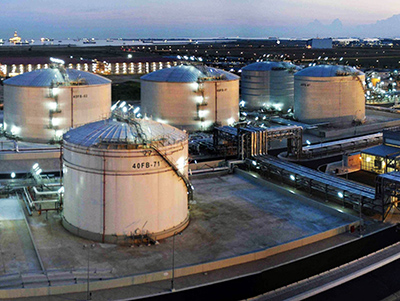 As a result of the search for solutions to global environmental and energy problems, striving of individual countries to diversify energy sources and switch to a model of sustainable economic development, based on modern energy-efficient "green" technologies, the production and consumption volumes of liquid biofuels have reached their record levels over the last decade.The formation of brand new large centers of the biofuel industry allows us to talk about the creation of a new global market of eco-friendly types of motor fuel. Whereas at the end of the 20th century the production geography of bioethanol and biodiesel was of a local character, mainly concentrated within several countries, by the end of 2010 a new stage in the development of the biofuel industry began. From a regional (country) level, it came to a global level, having created new trade and economic flows.
As a result of the search for solutions to global environmental and energy problems, striving of individual countries to diversify energy sources and switch to a model of sustainable economic development, based on modern energy-efficient "green" technologies, the production and consumption volumes of liquid biofuels have reached their record levels over the last decade.The formation of brand new large centers of the biofuel industry allows us to talk about the creation of a new global market of eco-friendly types of motor fuel. Whereas at the end of the 20th century the production geography of bioethanol and biodiesel was of a local character, mainly concentrated within several countries, by the end of 2010 a new stage in the development of the biofuel industry began. From a regional (country) level, it came to a global level, having created new trade and economic flows.
Breakthrough in Biofuel Industry
 The first decade of the 21st century became a real breakthrough for the biofuel industry. For the first time, along with bioethanol, which has been traditionally used as a motor fuel, biodiesel has begun to be consumed on a market of eco-friendly fuels on a commercial scale. Large biodiesel enterprises have first appeared in the EU countries, and then in other regions of the world.
The first decade of the 21st century became a real breakthrough for the biofuel industry. For the first time, along with bioethanol, which has been traditionally used as a motor fuel, biodiesel has begun to be consumed on a market of eco-friendly fuels on a commercial scale. Large biodiesel enterprises have first appeared in the EU countries, and then in other regions of the world.
The main results of the change of the biofuel industry macro-territorial structure in the world have led to the fact that the United States became the leader in terms of production and consumption of bioethanol in the transport sector. Together with Brazil, they account for 90% of total production volume. Moreover, starting from the mid-2000s, in both Brazil and the United States a sharp growth of biodiesel plants was recorded, which led to record volumes of consumption of this type of motor fuel.
Biofuel Plants in France, Germany, Spain
The European biofuel industry has gone through essential changes. Over the past decade, biofuel plants appeared in almost all EU countries, which led to a decrease in the relative shares of Germany, France and Spain in the structure of biofuel production. The role of Eastern European countries has increased, where in the mid-2000s the first large bioethanol and biodiesel plants came into operation, enabling them to provide not only their own needs, but also export surplus fuel to other countries.

The rise of the biofuel industry was recorded in developing countries. First of all, it was about the countries of South America and South-East Asia. The incentive for the development of their own biofuel industry was not so much an attempt to improve the environmental situation or reduce dependence on fossil fuels on the domestic market, but rather an emerging opportunity to export biofuel to European and US countries. According to experts, it is possible to forecast the growth of export of biodiesel from Thailand, Indonesia, Malaysia, Philippines to some European countries. Argentina, which is already one of the world leaders in the supply of biodiesel, may become the key player, as well as Brazil, and to a lesser degree the countries of Central America, which will determine the world level of bioethanol supply.
Over the past decade, one of the key industrial areas of biofuel production, specializing in the production of biodiesel, has formed on the territory of EU countries. For countries, the development of the biofuel industry is determined, first of all, by the environmental policy, pursued by the European Union.
